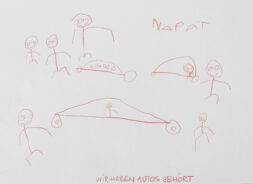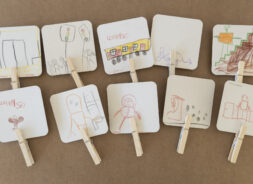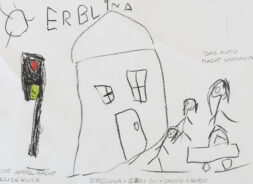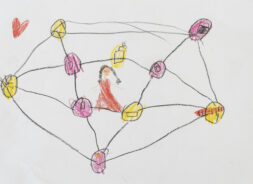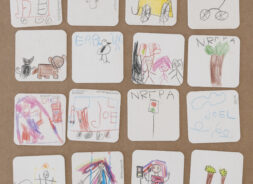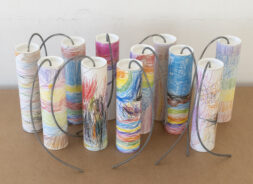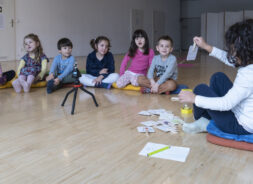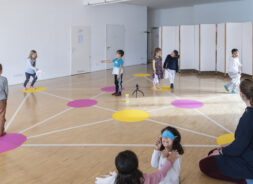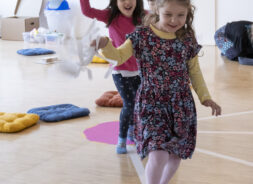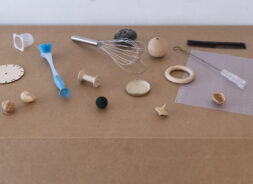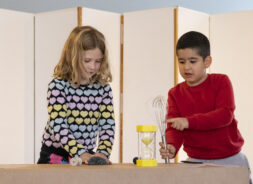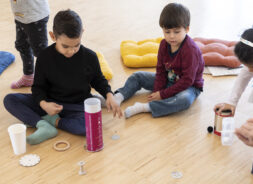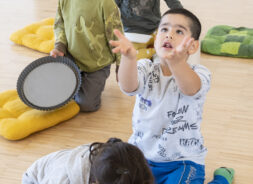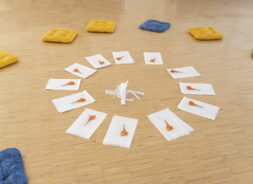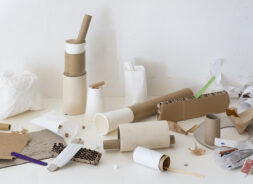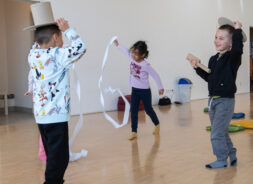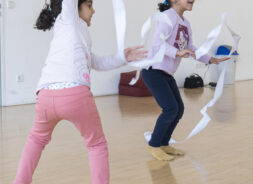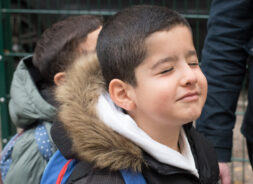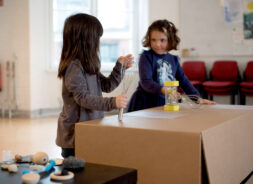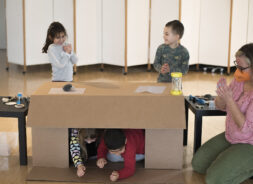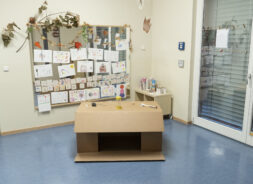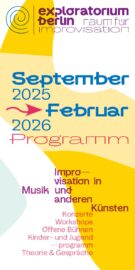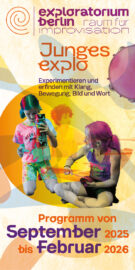»Die Geräuschesammler & ihre Rumpelkiste«
(The Sound Collectors & Their Rattletrap)
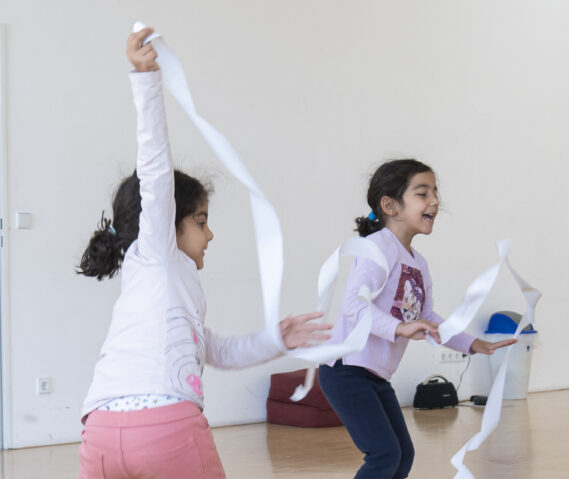
A collaborative project between geräusch[mu’si:k] e.V., exploratorium berlin and four daycare centres in Kreuzberg from August to November 2021. Participants included the intercultural daycare centre Kindervilla Waldemar e.V., the AWO daycare centre Lingulino, the daycare centre Traumbaum and the daycare centre Stallschreiberstrasse (Orte für Kinder GmbH).
How can you collect sounds on a walk and bring them to the exploratorium? What does paper music sound like? How do you build rattles, thunder drums and rustling bags? And what kind of sounds do round things make?
Five groups of preschoolers were able to find out these and many other exciting things in autumn 2021 in the project ‘The Sound Collectors & Their Rattle Box’ with sound artists Daniela Fromberg and Stefan Roigk from geräusch[mu’si:k] e.V.
After a taster day at the nursery, each group of children visited the exploratorium once a week for four weeks, exploring four different daily themes with the sound artists in the large hall.
The journey to the exploratorium was already part of the project: the children explored their sound environment on listening walks. The children listened intently and searched for sounds, named them and later remembered them together at the exploratorium and recorded them in drawings. This collection of sounds was expanded over the course of the various theme days.
From baker’s bags to cardboard tubes – on the first theme day, everything at the exploratorium revolved around ‘paper music’. The children explored the sounds they could make with paper and cardboard in various games and exercises, and then made their own paper pom-poms. Together, they tried things out, presented, conducted, drew – and listened to paper music by contemporary composers.
Everything that rolls and tumbles – the second theme day was all about ‘round music’. Using a wide variety of round objects, the children tried out and demonstrated sounds and drew these sound generators and their noises. The children built a rattle cup and listened to compositions by sound artist Hanna Hartman together. After exploring the possibilities of sound, they conducted extensively and made ‘round music’.
Cardboard as a sound box – the third theme day focused on ‘cardboard music’. A huge cardboard box invited the children to crawl inside. The principle of the sound box was explained to them in a child-friendly way. Then they took turns trying out what sounds could be produced on the cardboard box, first with their fingers and then with everyday materials – even a gentle stroke of the cardboard could be heard very loudly from inside. Now the children were active as musicians and played – concentration! – little noise concerts for the listeners in the cardboard box. Finally, thunder drums were made from cardboard tubes.
Playing with sounds together – on the fourth theme day, the children compiled a list of the sounds they had heard, explored and collected during their listening walks over the past three weeks. The children then symbolically recorded their favourite sounds on small cardboard signs, which were subsequently used to make music – when a card was shown by the child conducting, the other children imitated the sound with their voices and bodies. Each child was allowed to try conducting the sound choir using the cards.
Based on Mauricio Kagel’s ‘Pas de Cinq’, a large, colourful pentagon with many connecting lines and intersections was stuck to the floor of the hall as a playing field: when walking from point to point, sounds could be made with the various instruments. The children took turns in the role of conductor to decide who was allowed to move on and play.
Closing days
At the end of the project, each nursery held a closing presentation for the other children at the nursery, their parents and the teachers. Here, the children involved in the project were able to demonstrate and exhibit their results and explain the cardboard and everything else to the other children as sound ambassadors. Afterwards, the guests were also allowed to give cardboard concerts themselves.
The project was made possible by funding from the Künste öffnen Welten of the Bundesvereinigung Kulturelle Kinder-und Jugendbildung e.V. (BKJ) – program partner of the Bundesministeriums für Bildung und Forschung in the program Kultur macht stark. Bündnisse für Bildung.
Download programmes
Please note that the programmes are only available in German.
Address
exploratorium berlin
Zossener Straße 24
10961 Berlin (Kreuzberg)
Marheinekeplatz (Bus 248, 20m)
U Gneisenaustraße (Bus 140, U7, 200m)
U Mehringdamm (Bus M19, U6, U7, 900m)
U Hallesches Tor (Bus M41, Bus 248, U1, U3, U6, 1000m)
Office Hours
Mo – Di 10.00 – 14.00
Mi 14.00 – 18.00
Do – Fr 10.00 – 14.00
